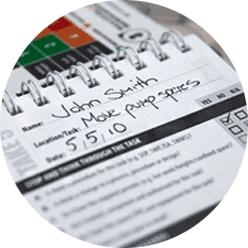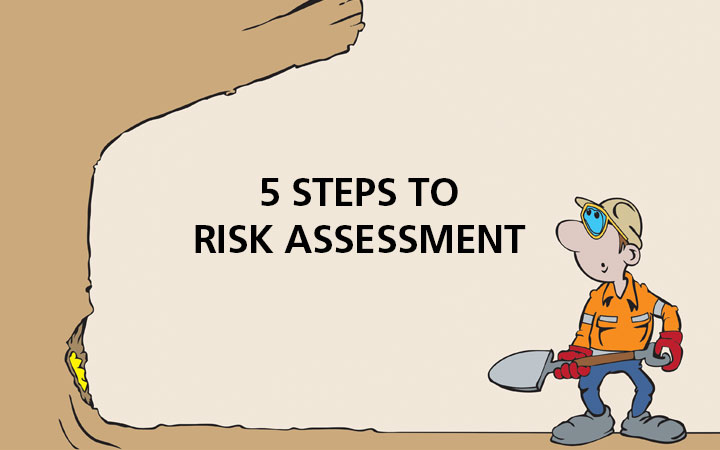Many of our clients have adopted a Zero Harm/No Accidents Today culture. While there is some debate about the success of such programs(Footnotes 1,2,3), everyone agrees that any focus on increasing health and safety at work is a good thing.
The other point that everyone seems to agree on, is that for any safety program to be really effective it must have ownership and understanding from the bottom up and be fully and sincerely supported by management.
Identifying hazards and controlling risks in the workplace is at the heart of any organisational Safety Management Plan. Risk management is the responsibility of all levels of operation – from ‘on the floor’ to ‘the glass ceiling’. Whether you are an equipment operator or the CEO you have an obligation under health and safety legislation to ensure your own safety and that of those around you.
 Risk management tools take many forms, but in the simplest terms they all require you to follow these 5 steps to risk assessment:
Risk management tools take many forms, but in the simplest terms they all require you to follow these 5 steps to risk assessment:
- Stop
- Think about what you need to do
- Identify hazards – look up, down and around
- Plan and implement measures to minimise the risks associated with each hazard
- Proceed with your task, monitoring the effectiveness of the controls.
A personal hazard identification tool like Take 5 can help you with this process by posing a list of questions to ask and answer for yourself. You work through the questions and tick the relevant boxes. A tick in a bold box highlights a potential hazard that must be addressed before proceeding with the task.
On the other side of the page there is a section for describing the hazard and listing the controls to be used to minimise the risk. You can also rate the risk according to the likelihood of an incident occurring and the worst possible outcome should the incident occur. The risk rating is calculated using a risk matrix (included on the cover of the tool) both before and after the controls are implemented. Use the risk rating to determine if the risk of proceeding with the task after the controls have been implemented is an acceptable one, or whether the task should be put on hold until it can be made safer.
A Take 5 is a simple but effective tool. It doesn’t take long to do, but can save you a lot of pain and your company a lot of money by minimising incidents and lost time injuries.
Have a look at the free Take 5 online training package at pertrain.com.au to see if this tool would be helpful at your work site.
Sources:
1. Jones, K. 2012, Zero Harm persists in confusing companies on safety,
http://safetyatworkblog.com/2012/11/27/zero-harm-persists-in-confusing-companies-on-safety/
2. Douglas, A. 2012, Zero Harm=Zero Truth, http://leadingthought.com.au/2012/11/zero-harmzero-truth/
3. Informa Australia, 2013, Is ‘Zero Harm’ achievable or theoretical?
http://informaaustralia.wordpress.com/2013/06/06/is-zero-harm-achievable-or-theoretical/

